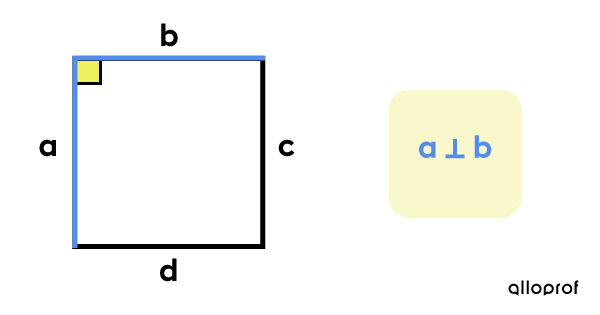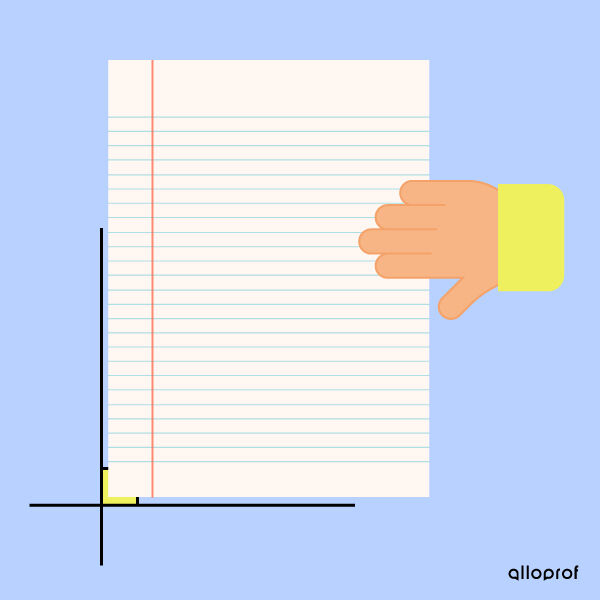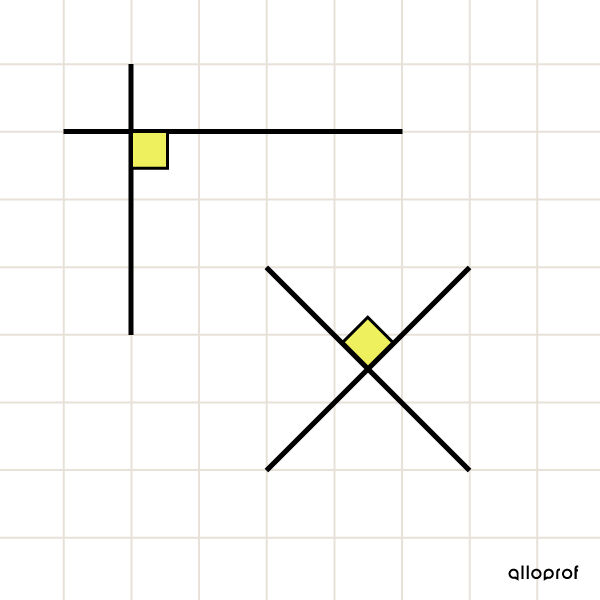Parallel lines are lines that never meet even when they are extended.
Example:

Use the symbol "//" to indicate that two lines are parallel.
Example:

The symbols “a // b” indicate that line a is parallel to line b.
The lines of a plane figure can be parallel.
To find out what a plane figure is, see the Plane Figures concept sheet.

Extend the two lines to check whether they are parallel to each other. If the lines never intersect even while extending them, they are parallel.
Example:

Check that the distance between the lines is the same everywhere by measuring the distance in at least two places.
Example:


Use a grid to draw two parallel lines. The squares on the grid can help keep the lines the same distance apart.
Examples:
These two lines are at a distance of 1 square.

These two lines are at a distance of 4 squares.

Perpendicular lines are two lines that intersect and form a right angle.
Examples:

Use the symbol "⊥" to indicate that two lines are perpendicular.
Example:

The symbols “a ⊥ b” indicate that line a is perpendicular to line b.
The lines of a plane figure can be perpendicular.
To learn about plane figures, see the Plane Figures concept sheet.

To check if two lines are perpendicular, place the corner of a sheet of paper where the lines intersect.
The angle is a right angle when the lines that form the angle are aligned with the sides of the sheet.
Example:

To draw perpendicular lines, use the squares of a grid to make sure the lines are straight. The grid helps to draw a right angle.
Examples:
